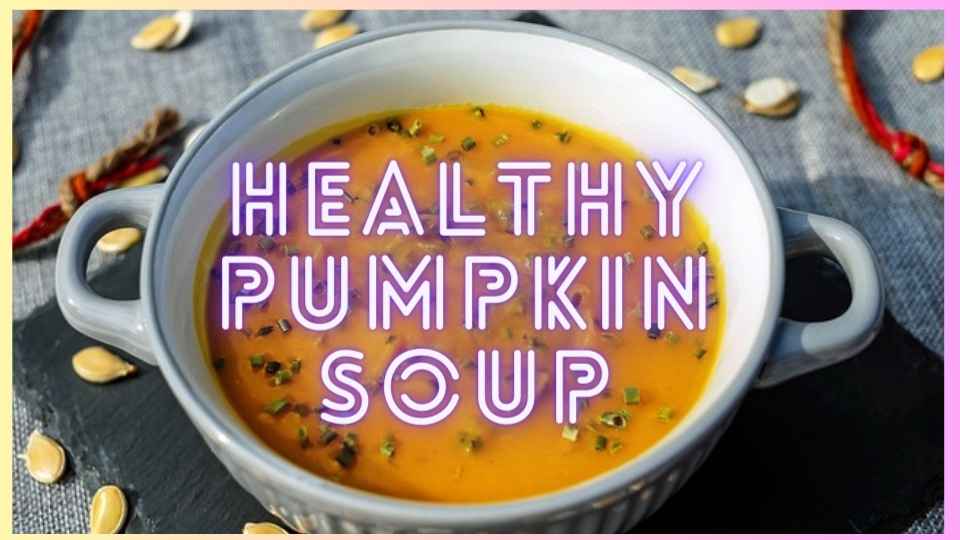We believe in promoting healthy eating habits while indulging in delicious flavors. Our expert team of chefs and nutritionists has created a scrumptious recipe for healthy pumpkin soup that will not only tantalize your taste buds but also provide a boost of essential nutrients. In this article, we will share with you our mouthwatering recipe for pumpkin soup and shed light on the numerous health benefits it offers. Prepare to embark on a culinary journey that will leave you craving for more!
The Perfect Blend of Flavor and Health:
Our healthy pumpkin soup is a clever fusion of seasonal ingredients that are both wholesome and flavorsome. We carefully select ripe pumpkins, known for their vibrant colors and sweet taste, ensuring that each spoonful delivers a delightful burst of autumn flavor.
High-quality Nuts for Diabetics to eat
Alongside this star ingredient, we incorporate a medley of aromatic spices, including nutmeg, cinnamon, and cloves, to create a symphony of flavors that will warm your soul on chilly evenings. Our recipe also incorporates a hint of ginger, which provides a subtle zing and a myriad of health benefits.
The Power of Pumpkin:
Pumpkin, the superstar of our soup, is not just a Halloween decoration. It is a nutrition powerhouse! Packed with essential vitamins and minerals, pumpkin offers a myriad of health benefits, making it an excellent addition to any diet. Rich in vitamin A, pumpkin promotes healthy vision and supports immune function. It is also a great source of fiber, aiding digestion and promoting a healthy gut. Moreover, pumpkin is low in calories, making it an ideal option for weight-conscious individuals.
A Nourishing Delight:
Our healthy pumpkin soup is not just a treat for your taste buds – it is a nourishing delight for your body. Each spoonful of this velvety goodness is packed with essential nutrients that your body craves. We prioritize using fresh, locally sourced ingredients to maximize the nutritional value of every bowl. Our recipe includes a dash of creamy coconut milk, which adds a luscious texture and provides healthy fats that aid in nutrient absorption and satiety. Additionally, we use vegetable broth as the base, making our pumpkin soup suitable for both vegetarians and vegans.
Health Benefits:
- Immune Boosting Properties: The vitamin A content in pumpkin strengthens your immune system, protecting you from infections and illnesses.
- Heart Health: Pumpkin is rich in potassium, an essential mineral that helps regulate blood pressure, promoting cardiovascular health.
- Weight Management: With its high fiber content, pumpkin keeps you feeling full for longer, curbing unnecessary cravings and supporting healthy weight management.
- Skin Radiance: The beta-carotene present in pumpkin promotes a healthy complexion and offers protection against skin damage caused by harmful UV rays.
- Eye Health: The abundance of vitamin A in pumpkin is vital for maintaining good eyesight and preventing age-related vision problems.
How healthy is pumpkin soup?
Pumpkin soup can be a healthy and nutritious dish when prepared in a wholesome manner. Here are some factors to consider when evaluating the healthiness of pumpkin soup:
- Nutrient Content: Pumpkin is a rich source of vitamins and minerals, particularly vitamin A, vitamin C, and potassium. These nutrients are important for overall health and can contribute to a nutritious meal.
- Low in Calories: Pumpkin is relatively low in calories, making it a good choice for those looking to manage their weight. However, the calorie content of pumpkin soup can vary depending on the ingredients and preparation methods, such as the addition of cream or butter.
- Fiber: Pumpkin contains dietary fiber, which can help promote feelings of fullness and aid in digestive health. Including the pumpkin’s flesh and pulp in the soup can contribute to its fiber content.
- Fat Content: The fat content of pumpkin soup depends on how it’s prepared. Creamy pumpkin soups made with heavy cream or butter will be higher in saturated fat, while soups prepared with lower-fat ingredients like low-fat milk or vegetable broth will be lower in fat.
- Sodium: Be mindful of the sodium content in your pumpkin soup, particularly if using store-bought or canned broth. High sodium intake can contribute to health issues, such as hypertension, so consider using low-sodium or homemade broth.
- Additional Ingredients: Pumpkin soup can be made with a variety of ingredients, such as spices, herbs, and vegetables. Adding extra vegetables can increase the soup’s overall nutrient content.
- Serving Size: Pay attention to portion sizes. Even a healthy soup can become less healthy if consumed in excessive amounts.
To make a healthier pumpkin soup, you can:
- Use low-sodium broth or make your own.
- Limit the use of high-fat ingredients like heavy cream or butter.
- Include a variety of vegetables and spices for flavor and additional nutrients.
- Serve in appropriate portion sizes.
Ultimately, the healthiness of pumpkin soup depends on the recipe and ingredients used. A simple, homemade pumpkin soup with a focus on whole, unprocessed ingredients is generally a nutritious choice. However, if you’re concerned about specific dietary requirements or health concerns, it’s a good idea to consult with a healthcare professional or registered dietitian for personalized advice.
Is it good to eat pumpkin soup everyday?
Eating pumpkin soup every day can be a part of a healthy diet, but, like any food, it should be consumed in moderation to ensure a balanced and nutritious diet. Here are some things to consider:
- Nutritional Benefits: Pumpkin is a nutritious food that is rich in vitamins, minerals, and antioxidants. It’s a good source of vitamin A, vitamin C, potassium, and fiber. Additionally, pumpkin soup is often prepared with other healthy ingredients like broth, vegetables, and spices, which can add to its nutritional value.
- Balanced Diet: While pumpkin soup is nutritious, it’s important to maintain a well-rounded diet that includes a variety of foods from different food groups. Eating the same thing every day can lead to nutrient imbalances and deficiencies. Make sure you’re also getting proteins, grains, fruits, and other vegetables in your diet.
- Diversity: Variety in your diet is key to ensure you get a wide range of nutrients. Eating different types of soups and meals will help you avoid getting bored with your food and ensure that you’re meeting your nutritional needs.
- Preparation: The nutritional value of pumpkin soup can vary depending on how it’s prepared. Avoid adding excessive amounts of unhealthy ingredients like heavy cream, butter, or excessive salt, as this can make the soup less healthy.
- Personal Dietary Needs: It’s important to consider any specific dietary requirements or restrictions you may have. For example, if you have allergies, sensitivities, or health conditions that need to be managed through diet, be mindful of how pumpkin soup fits into your overall meal plan.
- Portion Size: Even healthy foods can be problematic if consumed in excess. Pay attention to portion sizes to ensure you’re not overeating.
🔥🔥Click here to follow US IT BARI-All about Healthy Foods site in Google News🔥🔥
In summary, pumpkin soup is a healthy and nutritious food that can be a part of your diet, but it’s best when consumed as a part of a varied and balanced meal plan. If you’re considering eating it every day, be mindful of the overall quality of your diet, portion sizes, and any individual dietary needs you may have. Consulting with a nutritionist or healthcare provider can also help you make the best dietary choices for your specific situation.
What is pumpkin soup made of?
Pumpkin soup is a delicious and creamy soup typically made from a combination of ingredients that include pumpkin, various seasonings, and often other vegetables or ingredients to enhance its flavor and texture. Here’s a basic recipe for pumpkin soup:
Ingredients:
- Pumpkin: The main ingredient, usually peeled, seeded, and diced.
- Onions: Chopped onions are often used as a base for the soup.
- Garlic: Minced garlic adds flavor to the soup.
- Stock or broth: Vegetable or chicken stock is commonly used to give the soup a liquid base.
- Seasonings: Common seasonings include salt, pepper, and spices like nutmeg, cinnamon, or cayenne for added flavor.
- Cream or milk: To make the soup creamy, you can add heavy cream, milk, or a dairy-free alternative like coconut milk.
- Butter or oil: Used to sauté the onions and garlic.
- Optional toppings: Some people like to garnish their pumpkin soup with ingredients like roasted pumpkin seeds, croutons, or a drizzle of olive oil.
Here’s a simple method for making pumpkin soup:
- Start by sautéing chopped onions and minced garlic in a pot with some butter or oil until they become translucent and fragrant.
- Add the diced pumpkin to the pot and cook for a few minutes to allow the flavors to meld.
- Pour in your choice of stock or broth and season the mixture with salt, pepper, and any desired spices or herbs.
- Simmer the soup until the pumpkin becomes tender and can be easily mashed with a fork.
- Use an immersion blender or transfer the soup to a regular blender to puree it until smooth and creamy.
- Return the pureed soup to the pot, add cream or milk (or a dairy-free alternative), and heat it gently. Adjust the seasoning to taste.
- Serve the pumpkin soup hot, garnished with your choice of toppings.
Pumpkin soup can be adjusted to suit your taste, so feel free to experiment with the ingredients and seasonings to make it perfect for you. It’s often served as an appetizer or a comforting fall dish.
How long does homemade pumpkin soup last?
Homemade pumpkin soup can last for varying lengths of time depending on how it is stored and whether it contains any perishable ingredients. Here are some general guidelines:
- Refrigeration: If you have made a batch of pumpkin soup and want to store it in the refrigerator, it can typically last for about 3-4 days. Make sure to transfer the soup to an airtight container and refrigerate it promptly. It’s essential to cool the soup to room temperature before refrigerating it to prevent condensation inside the container.
- Freezing: If you want to extend the shelf life of your homemade pumpkin soup, freezing is a good option. Pumpkin soup can be frozen for up to 2-3 months without a significant loss of quality. To freeze it, allow the soup to cool to room temperature, transfer it to an airtight container or freezer-safe bags, leaving some space for expansion, and label it with the date. Thaw the soup in the refrigerator when you’re ready to use it.
- Ingredients: The shelf life of pumpkin soup may also depend on the other ingredients you use. If your soup contains dairy or other perishable ingredients, it may spoil more quickly. Be mindful of these ingredients and their expiration dates.
Always use your best judgment when assessing the freshness and safety of homemade pumpkin soup. If it smells or looks off, or if you’re unsure about its safety, it’s better to discard it to avoid the risk of foodborne illness.
Related Post
Best High Fat Foods That Offer Great Health Benefits
Health Benefits of Eating Strawberries
Health Benefits of Blueberries

All About Healthy Foods Content Writer With SEO Expert
 Ask us any question!
Ask us any question!

